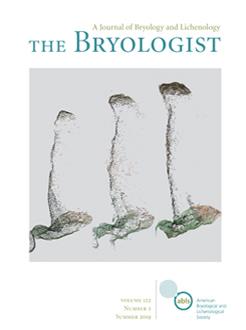Processes that shape biogeographic patterns in lichens have been of long-standing interest, especially in extreme environments. Lecideoid lichens in Antarctica have been relatively well-studied and are thought to have a high degree of endemism. However, recent collection efforts in montane regions of western North America have uncovered lecideoid lichens morphologically similar to some from Antarctic and South American Sub-Antarctic regions, including Lecidea andersonii Filson and L. polypycnidophora U.Rupr. & Türk. To explore the similarity between these putative conspecifics, we used ITS and MCM7 sequence data to infer relationships within a phylogenetic framework. The resulting phylogenetic reconstructions provided further evidence of the close relationship between specimens from western North America with geographically distant lecideoid populations in the Southern Hemisphere. We recovered two diverse, well-supported clades, provisionally called the L. andersonii complex and the ‘Lecidea NA-ARG clade,’ both including species-level subclades. A number of lecideoid species and species-level lineages thought to be endemic to Antarctica, the South American Sub-Antarctic region, or with bipolar distributions also occur in montane regions of western North America. In some cases, these species-level clades corresponded to distinct geographic regions, e.g., L. polypycnidophora, while other species failed to show phylogenetic structure corresponding to distinct geographic regions, e.g., L. andersonii. These findings bring into question the origin and prevalence of truly endemic Antarctic lichen-forming fungi. Additional investigations into lecideoid lichens, including the biogeographic connection between western North America with Antarctica, will likely provide novel perspectives into the connection between Antarctica and North America, potential colonization routes and the timing of dispersal events.
How to translate text using browser tools
12 July 2019
A biogeographic connection between Antarctica and montane regions of western North America highlights the need for further study of lecideoid lichens
Ella Hale,
Makani L. Fisher,
Rachel Keuler,
Barb Smith,
Steven D. Leavitt
ACCESS THE FULL ARTICLE

The Bryologist
Vol. 122 • No. 2
May 2019
Vol. 122 • No. 2
May 2019
Antarctica
biogeography
cosmopolitan
dispersal
extremophiles
Lecidea





